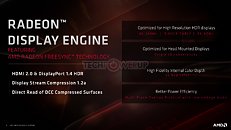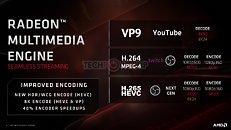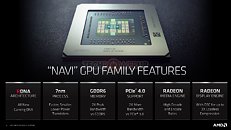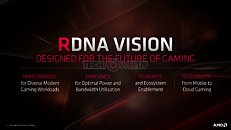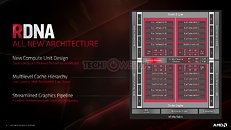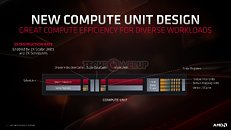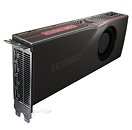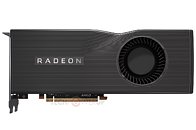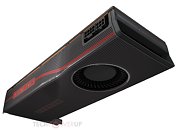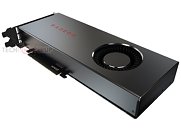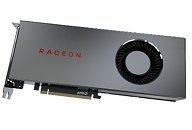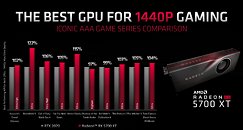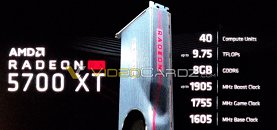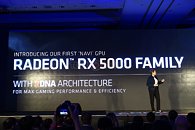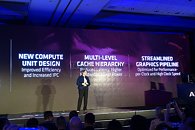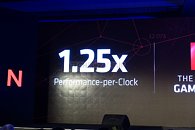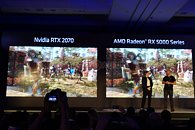
AMD Radeon RX 5700 XT and RX 5700 to Have Same Memory and ROP Configuration
In a bid to bolster competitiveness of the $379 Radeon RX 5700 (non-XT) against its rival from the NVIDIA camp, the GeForce RTX 2060, AMD is leaving the memory configuration completely unchanged from the faster $449 Radeon RX 5700 XT. The RX 5700 will get 8 GB of GDDR6 memory across a 256-bit wide memory bus, with the same 14 Gbps memory speed as the RX 5700 XT. This works out to a memory bandwidth of 448 GB/s. In comparison, the $349 (launch price) RTX 2060 only has 6 GB of memory, across a 192-bit wide memory bus. With a memory speed of 14 Gbps, this setup achieves 336 GB/s.
The other area where AMD is reinforcing the RX 5700 is its raster muscle. The RX 5700 has the same 64 ROPs as the RX 5700 XT. AMD carved this SKU out by disabling two workgroup processors (four RDNA compute units), reducing the stream processor count to 2,304. This also turns down the TMU count from 160 to 144. The GPU engine clock speeds are also reduced, with 1465 MHz base, 1625 MHz "gaming clocks," and 1725 MHz boost clocks; compared to 1605/1755/1905 MHz of the RX 5700 XT. The RX 5700 has a typical board power of 180W compared to the 224W of the RX 5700 XT. Custom design cards may even feature just one 8-pin PCIe power input, while some of the premium factory-overclocked designs could use 8-pin + 6-pin configurations.
The other area where AMD is reinforcing the RX 5700 is its raster muscle. The RX 5700 has the same 64 ROPs as the RX 5700 XT. AMD carved this SKU out by disabling two workgroup processors (four RDNA compute units), reducing the stream processor count to 2,304. This also turns down the TMU count from 160 to 144. The GPU engine clock speeds are also reduced, with 1465 MHz base, 1625 MHz "gaming clocks," and 1725 MHz boost clocks; compared to 1605/1755/1905 MHz of the RX 5700 XT. The RX 5700 has a typical board power of 180W compared to the 224W of the RX 5700 XT. Custom design cards may even feature just one 8-pin PCIe power input, while some of the premium factory-overclocked designs could use 8-pin + 6-pin configurations.



